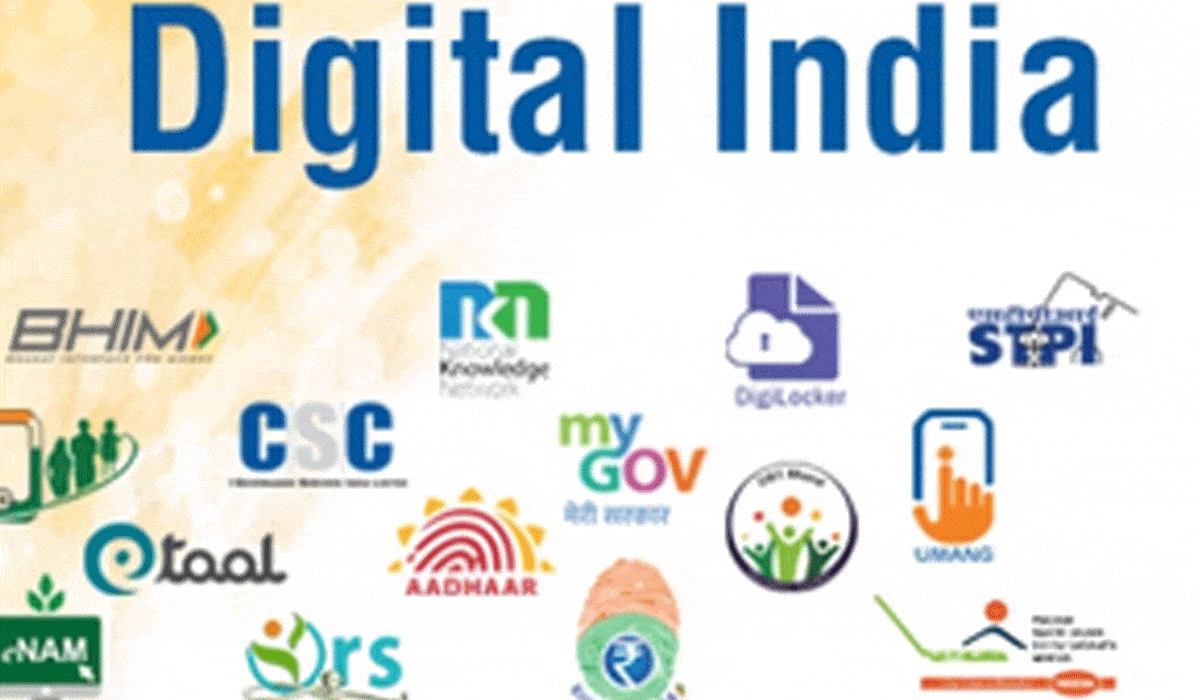New Delhi: Indias Digital Infrastructure Achieves Landmark Milestones
Indias Digital Infrastructure Achieves Landmark Milestones

Indias Digital Infrastructure Achieves Landmark Milestones has emerged as a global leader in digital transformation, achieving groundbreaking progress in digital infrastructure development. The government recently announced that 138.34 crore Aadhaar numbers have been generated, underscoring the country’s commitment to technological inclusivity. Alongside Aadhaar’s massive adoption, platforms like Digi Locker, DIKSHA, and Unified Payments Interface (UPI) have contributed significantly to reshaping India’s digital landscape.
Aadhaar: The Backbone of Indias Digital Infrastructure Achieves Landmark Milestones
Aadhaar, a unique identity system, has been pivotal in transforming how Indians access government and private sector services. As of now, over 138.34 crore Aadhaar numbers have been generated, making it one of the largest biometric-based identification systems globally.
This system facilitates seamless integration with various digital platforms, enabling secure and efficient identity verification across sectors. The government’s announcement highlights the scale and significance of Aadhaar in driving digital inclusion.
Digi Locker: Revolutionizing Document Management
Digi Locker, another cornerstone of India’s digital ecosystem, has surpassed 37 crore users. The platform currently stores over 776 crore documents, ranging from academic certificates to driving licenses, ensuring secure and easy access for citizens.
This digital document verification system reduces dependency on physical paperwork, enhancing efficiency and transparency in governance.
DIKSHA: Transforming Education Through Technology
The Digital Infrastructure for Knowledge Sharing (DIKSHA) platform has revolutionized India’s education sector. With 556.37 crore learning sessions conducted, 17.95 crore course enrollments, and 14.37 crore course completions, DIKSHA stands as the world’s largest education platform.
This initiative aims to bridge the educational divide, offering access to quality resources for students and teachers across urban and rural regions.
UPI: Driving Financial Inclusion and Innovation
Unified Payments Interface (UPI) continues to set records in digital payments. In October, UPI transactions reached a historic high of 16.58 billion, amounting to Rs 23.50 lakh crore. November witnessed 15.48 billion transactions, reflecting a 38% year-on-year growth in volume and 24% growth in value.
Experts predict UPI transactions could reach 25 billion monthly by the end of 2025, reinforcing India’s position as a leader in digital payment solutions.
Expansion of Data Centers: A Critical Pillar of Growth
India’s burgeoning digital ecosystem relies heavily on robust data center infrastructure. Currently, the country’s data centers have an IT load capacity of approximately 1,000 MW, with plans for substantial expansion.
Key Milestones in Data Centre Development:
- National Data Centers (NDC): Established in Delhi, Pune, Bhubaneswar, and Hyderabad, these facilities provide cloud services to government bodies and public sector undertakings (PSUs).
- Storage Expansion: With approximately 100 PB of storage, including advanced All Flash Enterprise Class Storage and Object Storage systems, NDCs ensure reliable performance for critical applications.
- New Developments: A state-of-the-art Tier-III NDC with 200 expandable racks is under construction in Guwahati.
Bridging the Digital Divide in the Northeast
The launch of the National Data Centre – North East Region (NDC-NER) in September 2020 marked a significant step towards addressing regional disparities. This facility supports:
- High-performance data storage and cloud infrastructure.
- Enhanced public service delivery.
- Socio-economic development in the northeastern states.
Cloud Ecosystem: Accelerating Digital Governance
India’s growing cloud service ecosystem plays a crucial role in supporting digital governance. Over 300 government departments leverage cloud services, enabling scalable and efficient service delivery. Notable platforms include:
- Government e-Marketplace (GeM): Streamlining procurement for government agencies.
- UMANG: Offering unified access to government services.
- API SETU: Facilitating open API integration.
- Co-WIN and Aarogya Setu: Key platforms in health services, particularly for vaccination tracking and contact tracing.
India’s Digital Future: A Vision of Growth and Innovation
The Ministry of Information and Broadcasting highlighted the role of innovations in cloud computing, artificial intelligence (AI), machine learning (ML), and digital governance in driving India’s digital evolution. These advancements ensure that the infrastructure remains agile and responsive to public and private sector demands.
Key Highlights of India’s Digital Transformation:
- Continuous innovation in technology.
- Strengthened data security and disaster recovery mechanisms.
- Inclusive growth by bridging regional and socio-economic divides.
Conclusion
India’s digital infrastructure journey underscores the nation’s commitment to innovation, inclusivity, and sustainable growth. From the universal adoption of Aadhaar to the expanding reach of platforms like Digi Locker, DIKSHA, and UPI, the country is well on its way to becoming a global digital powerhouse.
As data centers expand and cloud ecosystems flourish, India’s digital transformation sets a benchmark for other nations to follow.
